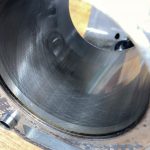Lay refers to the predominant or primary direction of the surface texture pattern on a material or object. It is a fundamental aspect of surface texture analysis, often assessed alongside roughness and waviness. The lay can be described as the orientation of the surface features or texture, and it plays a crucial role in various applications.
Understanding the lay of a surface is essential in fields such as manufacturing, engineering, and design because it can have a significant impact on functionality, aesthetics, and performance. For example, in industries like automotive manufacturing, the direction of the lay on engine components can influence how effectively they retain lubricants or how they wear over time. In the world of graphic design, the lay of paper fibers can affect how ink is absorbed and how colors appear on printed materials.
Controlling and optimizing the lay of a surface can involve various techniques, such as adjusting machining processes, selecting appropriate materials, or employing surface treatments. By aligning the lay with the intended application, manufacturers and designers can enhance product performance and quality.


